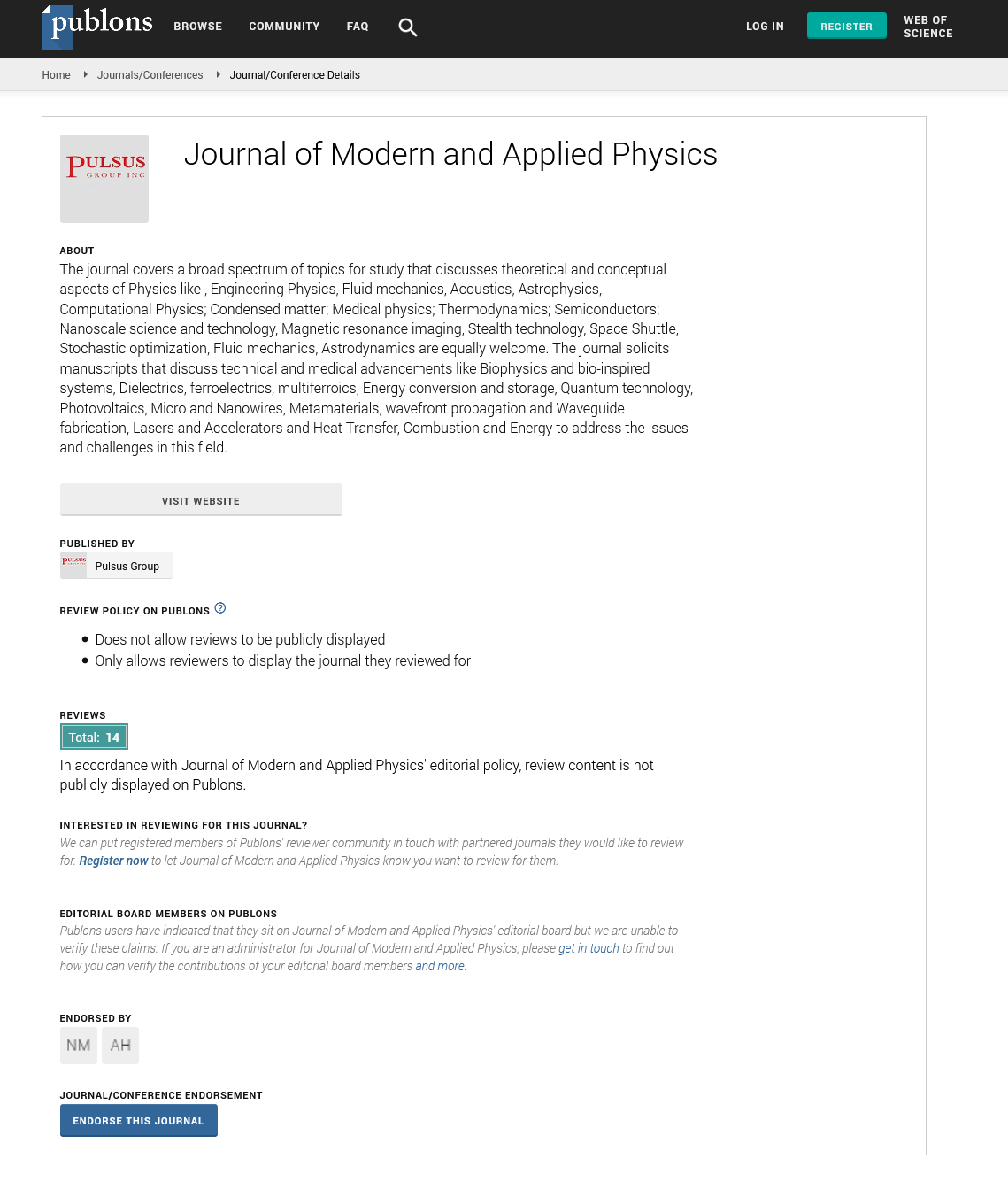How to explain the so-called room-temperature superconductivity using conventional experiments
Received: 07-Oct-2023, Manuscript No. puljmap-23-6767; Editor assigned: 10-Oct-2023, Pre QC No. puljmap-23-6767(PQ); Accepted Date: Oct 24, 2023; Reviewed: 16-Oct-2023 QC No. puljmap-23-6767(Q); Revised: 19-Oct-2023, Manuscript No. puljmap-23-6767(R); Published: 04-Nov-2023
Citation: Jun C. How to use conventional experiments to explain the so-called room temperature superconductivity phenomenon. J Mod Appl Phys. 2023; 6(4).
This open-access article is distributed under the terms of the Creative Commons Attribution Non-Commercial License (CC BY-NC) (http://creativecommons.org/licenses/by-nc/4.0/), which permits reuse, distribution and reproduction of the article, provided that the original work is properly cited and the reuse is restricted to noncommercial purposes. For commercial reuse, contact reprints@pulsus.com
Abstract
To reproduce the so-called phenomenon of room temperature superconductivity
Key Words
Superconductivity; Magnetism; Homonymous magnetic poles.
Introduction
In July of this year, a superconducting research team in South Korea published an article on a preprint website in the United States, suspected of discovering the room-temperature superconducting material LK-99. The synthesis method of the material is relatively simple, which has attracted high international attention. Many domestic and international laboratories quickly synthesized this material and conducted similar experiments, attracting people's attention, the video circulating online shows that LK-99 material can be in a semi-suspended state on a magnet. How can we explain the phenomenon of semi suspended state? So there were different opinions on both sides, with the opposing side believing that LK-99 does not fully possess all the properties of superconducting materials, while the approving side believes that further research is entirely possible [1-3].
I have been studying mechanics for nearly 20 years and have published multiple papers challenging traditional concepts both domestically and internationally. I have also downloaded many mobile version technology websites, constantly keeping an eye on major events in the technology industry. When seeing a research team in South Korea that may have discovered room temperature superconducting materials, the first reaction is that it is impossible. The reason is simple: in the universe, any object is both a forcebearing object and a force-applying object, and applying force requires energy consumption, and electrons are no exception. After seeing the relevant video, I quickly understood what was going on.
Experimental purpose
To reproduce the so-called phenomenon of room temperature superconductivity, thereby denying the illusion of room temperature superconductivity.
Experimental equipment
1. A cylindrical permanent magnet with strong magnetism, with a diameter of more than 2 centimetres and an unlimited height
2. A square or rectangular permanent magnet B, with a side length of about 1 cm and a thickness of about 3 mm (the NS pole of B has special requirements, that is, a set of opposite sides of the square or rectangle are N pole and S pole, which can be cut from existing magnets along the direction from N pole to S pole).
Experimental step
In the first step, place B on the N-pole of A, what will happen? What happens when the second step is to place B on the S pole of A?
Experimental conclusion
The homonymous magnetic poles repel each other, while the heteronymous magnetic poles attract each other. The B magnetic plate can stand up and be in a semi-suspended state.
If we smash a permanent magnet into pieces, we will find some irregularly shaped fragments among these fragments, which can also demonstrate the so-called room temperature superconductivity phenomenon. If my analysis is correct, the so-called room temperature superconductivity material is just like a magnet with magnetism. If I didn’t tell people that B is a magnet and spread this experimental video, did I also discover materials similar to room temperature superconductivity? What was the result? It must be harmful to others and oneself!
Applying force and dissipating energy is the starting point for my research on dynamics, thus establishing a new theory of dynamics. As a result, the cosmological view of dynamics has gradually formed, and the perspective of understanding the universe has also changed. Relevant achievements can be found in relevant papers in the reference literature [1-5].
References
- China Science Daily Mobile Edition
- Voice of Chinese Academy of Sciences Mobile Edition
- Chen Jun. Celestial Movement Adheres to the Conservation of Angular Kinetic Energy Xinhua Publ. House. 2014: 85-91
- Chen Jun. The Motion of Celestial Bodies Complies with Conservation of Angular Kinetic Energy. Int. J. New Dev. Eng. Soc. 3(4): 2019: 158-171.
- Jun C. Use the Law of Rotation Extreme Value to Prove That the Moon Does Not Rotate. Innov. Sci. Technol. 2; 2022:58-69.





